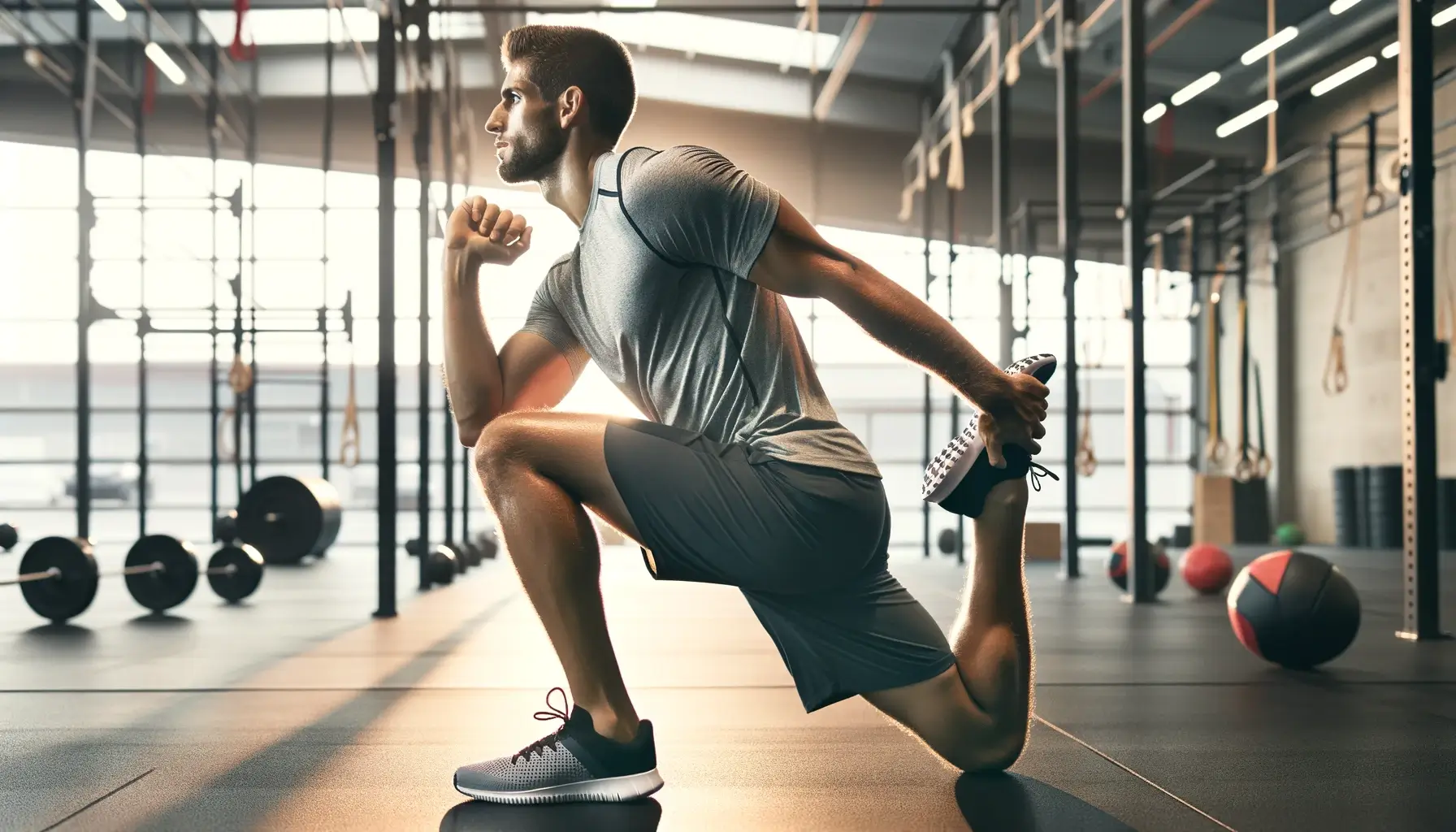Most athletes understand the crucial role flexibility plays in their performance on the field or court. Incorporating mobility drills into training routines can make a significant difference in overall athletic abilities. These drills not only help in preventing injuries but also enhance agility, speed, and overall performance. By focusing on improving range of motion and joint stability, athletes can unlock their full potential and excel in their respective sports.
Key Takeaways:
- Dynamic stretching is crucial for athletes as it helps to improve flexibility, increase range of motion, and enhance performance.
- Regular mobility drills can help prevent injuries by improving joint stability and muscle coordination.
- Focus on specific areas of the body that are prone to tightness or limited range of motion to target improvement in those areas.
- Incorporating mobility drills into a warm-up routine can help prepare the body for physical activity and optimize athletic performance.
- Consistency is key when it comes to mobility drills, as regular practice will lead to long-term flexibility gains and overall better athletic performance.
The Science of Mobility

Assuming you are looking to enhance your athletic performance, understanding the science behind mobility is crucial. Mobility drills are not just about stretching, but about improving the way your body moves through space, ultimately translating to better performance on the field or court.
Kinematics of Human Movement
Mobility is the foundation of human movement. Kinematics, the branch of mechanics concerned with the motion of objects without reference to the forces that cause the motion, plays a key role in understanding how our bodies move. By focusing on improving joint range of motion and muscle flexibility through targeted mobility drills, athletes can optimize their movement patterns and enhance performance while reducing the risk of injury.
Mobility drills designed to improve kinematics can help athletes move more efficiently, translating to better speed, agility, and power. Understanding the biomechanics of each movement and targeting specific areas through mobility work can lead to significant improvements in overall athletic performance.
The Role of Flexibility in Injury Prevention
To prevent injuries and sustain peak performance, flexibility is crucial. Flexibility allows muscles and joints to move through their full range of motion, reducing the risk of strains, sprains, and other injuries during physical activity. Integrating flexibility exercises, such as dynamic stretching and mobility drills, into training programs can enhance an athlete’s resilience and durability.
Role of flexibility in injury prevention extends beyond just physical benefits. It also promotes mental toughness and resilience, as athletes who prioritize flexibility are better equipped to handle the physical demands of their sport and recover more efficiently from intense training sessions.
Mobility Drills: The Essentials
All athletes aim to enhance their performance and achieve peak physical condition. One crucial aspect often overlooked in training regimens is mobility. Mobility drills are necessary for athletes as they can improve flexibility, agility, and overall performance.
Dynamic Stretching and Its Effects on Muscular Function
Dynamic stretching involves moving parts of your body and gradually increasing reach, speed of movement, or both. This type of stretching is highly beneficial for athletes as it helps in warming up muscles, increasing blood flow, and improving range of motion. Dynamic stretching also aids in muscle activation and prepares them for the demands of the upcoming activity. Research has shown that incorporating dynamic stretching into a pre-workout routine can enhance athletic performance and reduce the risk of injuries.
Static Stretching and Neuromuscular Harmony
Mobility drills involving static stretching are crucial for athletes to improve flexibility and neuromuscular harmony. Static stretching is a technique where a muscle is slowly stretched and then held in the stretched position for a period of time. This helps in lengthening the muscle-tendon unit, increasing flexibility, and promoting better muscle coordination. While some controversy surrounds the timing of static stretching, when done correctly and at the right time, it can have positive effects on an athlete’s performance.
The integration of static stretching in mobility drills can help athletes achieve a balance between muscle flexibility and neuromuscular coordination. It is important to note that static stretching should be performed after a workout or during a separate session to avoid any negative impact on muscle function during high-intensity activities.
Implementing a Mobility Program
Keep flexibility in mind when designing a mobility program for athletes. Proper mobility drills can help enhance an athlete’s performance and prevent injuries. It is important to tailor the mobility program based on the specific needs of the athlete and the demands of their sport.
Tailored Mobility Protocols for Diverse Athletic Disciplines
An athlete’s mobility program should be designed based on the requirements of their sport. Different athletic disciplines place varying demands on the body, so it is crucial to customize mobility drills accordingly. For example, a mobility protocol for a gymnast will differ from that of a powerlifter.
It is important to address the specific movement patterns and range of motion required for each sport. By focusing on tailoring mobility protocols, athletes can better prepare their bodies for the physical challenges they will face during training and competition.
Integration of Mobility Work into Training Regimens
One way to integrate mobility work into an athlete’s training regimen is to incorporate mobility drills as part of the warm-up routine. By including mobility exercises before a workout, athletes can improve their flexibility and joint mobility while also priming their bodies for the physical demands of their training session.
Any athlete looking to enhance their performance should prioritize incorporating mobility work into their training regimen. The integration of mobility drills can lead to improved athletic performance, reduced risk of injuries, and enhanced overall physical well-being.
Advanced Considerations
To enhance athletic performance through flexibility, athletes must explore into advanced considerations. These strategies are designed to optimize joint mechanics and maximize gains in range of motion. Here are some advanced considerations for athletes:
- Utilize PNF stretching techniques to enhance flexibility
- Implement dynamic stretching routines for improved mobility
- Explore the benefits of yoga for flexibility and recovery
- Consider incorporating foam rolling into your warm-up and cool-down routines
Overcoming the Limitations of Joint Mechanics
An athlete’s range of motion is often limited by joint mechanics, such as muscle imbalances and tightness. Addressing these limitations requires a targeted approach to stretching and mobility drills. By focusing on specific joints and muscle groups, athletes can enhance their flexibility and optimize their movement patterns. Additionally, incorporating corrective exercises can help to restore proper alignment and function, reducing the risk of injury and improving overall performance.
Periodization of Flexibility Training for Peak Performance
An effective flexibility training program should be periodized to meet the demands of the athlete’s sport and training cycle. By strategically planning the intensity, volume, and frequency of flexibility exercises, athletes can optimize their performance and reduce the risk of overtraining. Periodization allows athletes to peak at key times during their season, ensuring they are at their best when it matters most.
A carefully structured flexibility training program can lead to significant gains in range of motion, improved muscle function, and enhanced athletic performance. By incorporating periodization principles into their training, athletes can achieve peak flexibility levels while minimizing the risk of injury and overuse. Consistent focus on flexibility will not only enhance performance but also contribute to long-term athletic success.
Summing up
Conclusively, the importance of mobility drills for athletes cannot be overstated. These exercises not only enhance performance through increased flexibility and range of motion but also help prevent injuries. Athletes who incorporate regular mobility drills into their training routines are better equipped to reach their full potential and excel in their respective sports. By prioritizing flexibility and joint mobility, athletes can optimize their physical abilities and achieve peak performance levels. It is clear that integrating mobility drills into training regimes is a fundamental aspect of athletic success.
FAQ
Q: What are mobility drills for athletes?
A: Mobility drills are exercises designed to improve flexibility, range of motion, and overall movement patterns in athletes, helping them enhance their performance and reduce the risk of injuries.
Q: How do mobility drills enhance athletic performance?
A: Mobility drills help athletes improve their joint mobility and muscle flexibility, allowing for more efficient and effective movement patterns during training and competition, ultimately leading to better performance outcomes.
Q: Are mobility drills important for all types of athletes?
A: Yes, mobility drills are necessary for athletes of all levels and disciplines as they help optimize overall movement quality, prevent injuries, and enhance athletic performance across various sports and physical activities.
Q: When should athletes incorporate mobility drills into their training routine?
A: Athletes should include mobility drills at the beginning of their training sessions as part of their warm-up routine to prepare the body for the physical demands of exercise and improve movement efficiency throughout their workouts.
Q: Can mobility drills help athletes recover from intense training sessions?
A: Yes, mobility drills can aid in post-workout recovery by promoting blood flow, reducing muscle stiffness, and preventing the buildup of lactic acid, allowing athletes to recover faster and maintain optimal physical condition for future training sessions.


